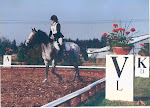
Exerpt
Observations on the Report of the
 FEI Veterinary and Dressage Committees' Workshop on 'The use of over-bending ("Rollkur") in FEI Competition,' January 2006. The practice of bit-induced over-bending is reviewed and evidence of its harm provided. Cruelty is defined as the infliction of avoidable pain and suffering. The anatomical, physiological, clinical and pathological evidence from many body systems indicates that over-bending is undoubtedly painful and undeniably avoidable. Even the standard use of a bit causes over 100 behavioral signs of pain and fear, and 40 different diseases. Over-bending is simply an extreme form of bit abuse. Such a painful training method transgresses the FEI guidelines on welfare and is incompatible with the physiology of exercise.
FEI Veterinary and Dressage Committees' Workshop on 'The use of over-bending ("Rollkur") in FEI Competition,' January 2006. The practice of bit-induced over-bending is reviewed and evidence of its harm provided. Cruelty is defined as the infliction of avoidable pain and suffering. The anatomical, physiological, clinical and pathological evidence from many body systems indicates that over-bending is undoubtedly painful and undeniably avoidable. Even the standard use of a bit causes over 100 behavioral signs of pain and fear, and 40 different diseases. Over-bending is simply an extreme form of bit abuse. Such a painful training method transgresses the FEI guidelines on welfare and is incompatible with the physiology of exercise.The range of motion in flexion is equally great. A dressage horse with its nasal profile vertical to the ground obviously has a 90¼ nasal angle (45¼ of flexion based on jowl angle). Such a horse during a dressage performance is already experiencing a severe degree of airway obstruction at the level of the throat. An over-bent horse with its chin on its chest may have a nasal angle of 128¼ (75¼ of flexion - see Fig 14). Such a position is natural enough in a stationary horse, if only held fleetingly and entirely voluntarily. When artificially maintained for either short or long periods at the walk, trot and canter, such a horse is - as I shall show - being asphyxiated.

For more information about the way the headset affects the anatomy of the airway and its openness at the level of the throat, see Cook and Strasser (2003).
http://www.horsemanpro.com/correspondence/dressage-videos.htm








No comments:
Post a Comment